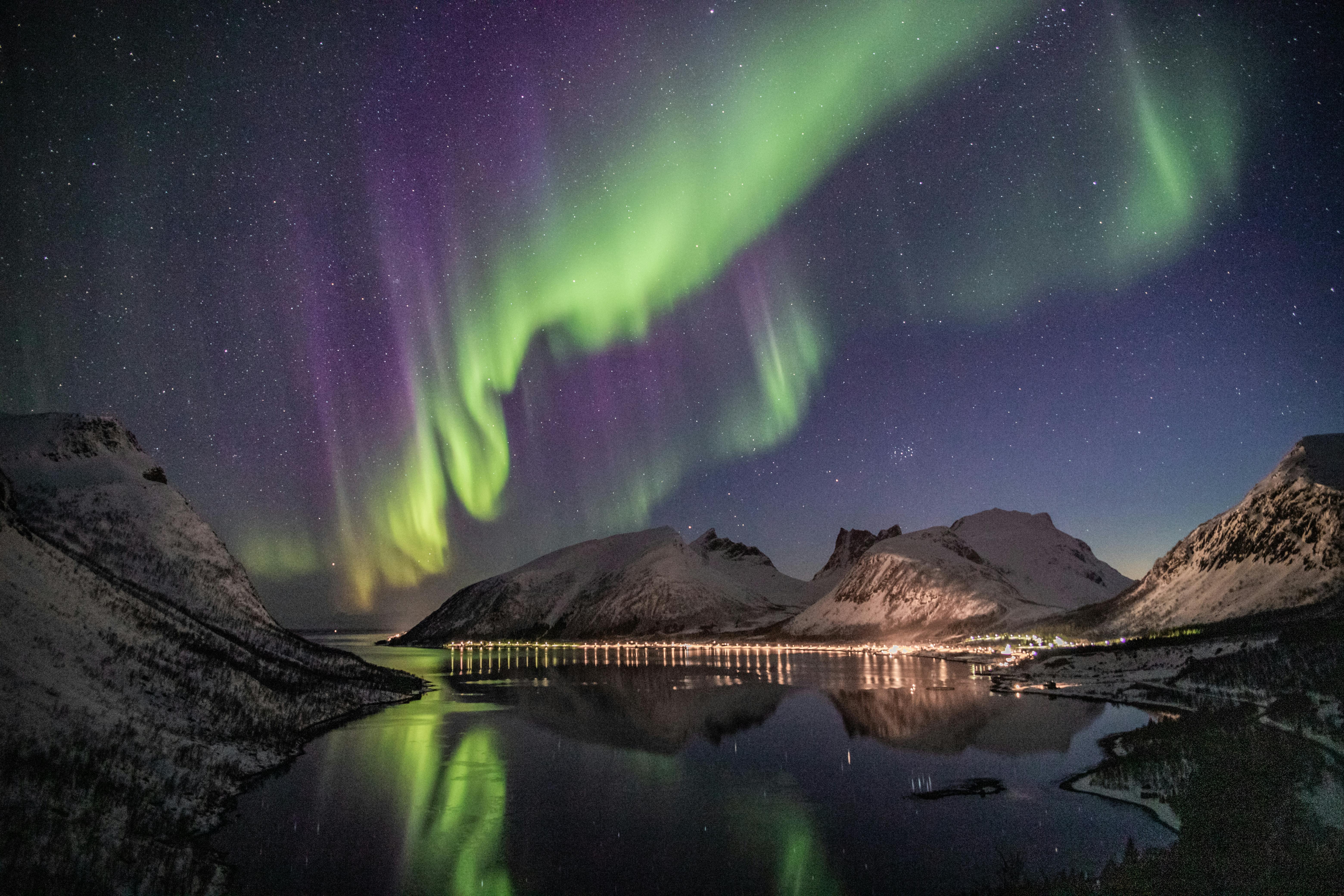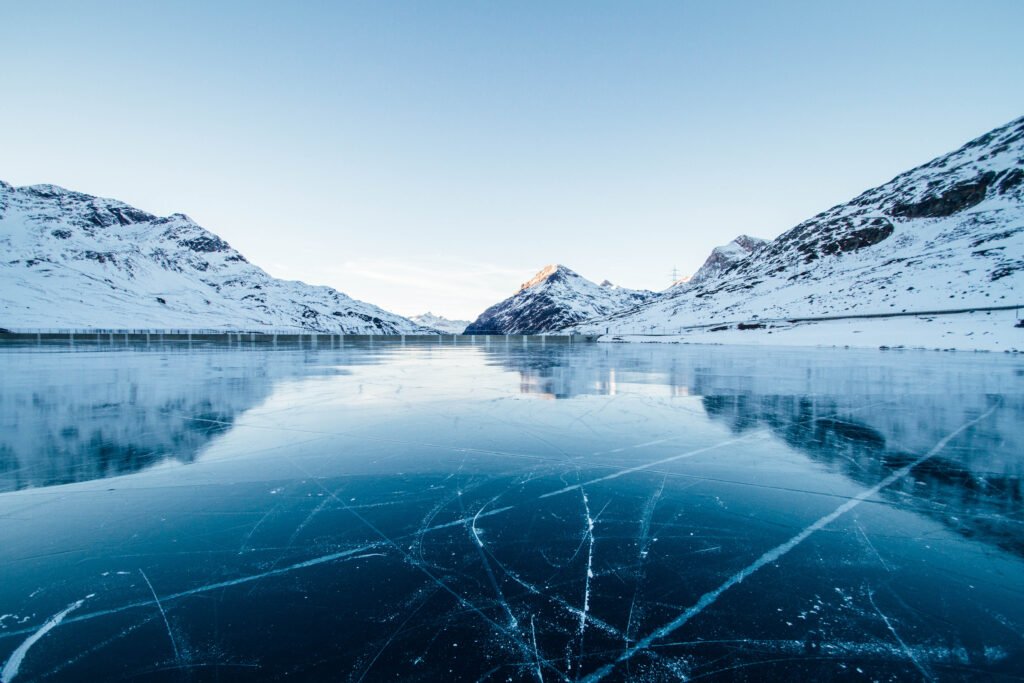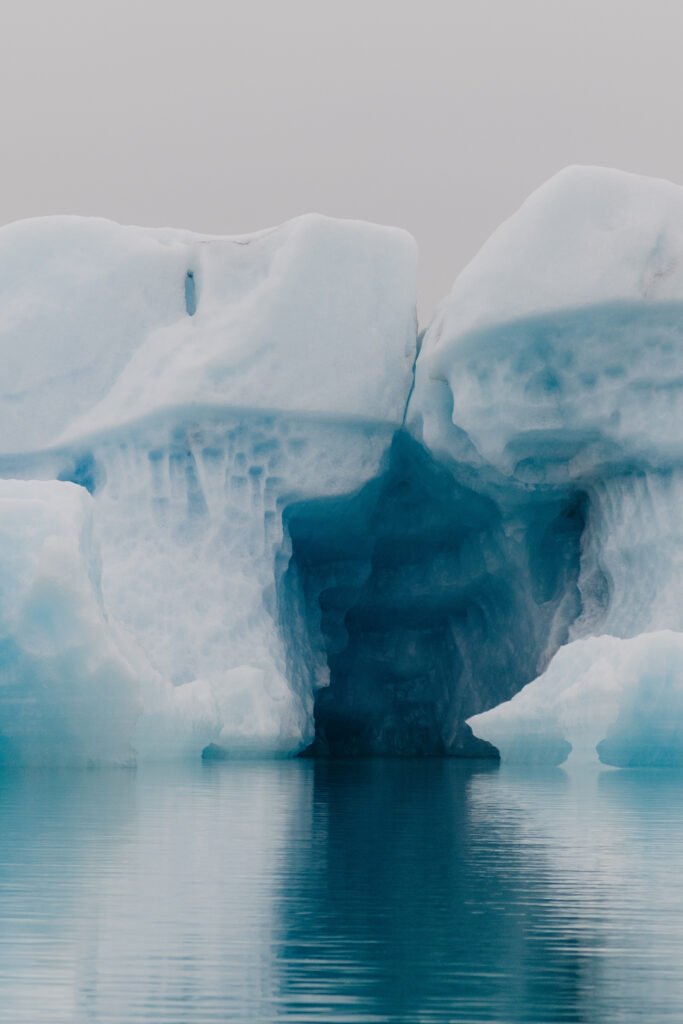Are you planning to embark on a thrilling adventure to witness the mesmerizing beauty of glaciers or explore icy terrains? Before you set foot on these icy surfaces, it is crucial to arm yourself with the knowledge of essential safety measures. With the unpredictable nature of glaciers and the potential risks associated with icy surfaces, it is important to be well-prepared. In this article, we will explore the safety measures you need to consider, ensuring a secure and enjoyable experience during your glacier or icy surface expedition. So, grab your warmest gear and let’s dive into the fascinating world of glacier safety!
1. Proper equipment
When it comes to walking on glaciers or icy surfaces, having the proper equipment is crucial to ensure your safety. Here are three key pieces of equipment you should always have:
1.1. Quality footwear
Investing in a pair of high-quality boots specifically designed for mountaineering and icy conditions is essential. Look for boots that have a sturdy and rigid sole to provide traction on slippery surfaces. Additionally, make sure they are insulated to keep your feet warm in cold temperatures. Having waterproof boots will also prevent your feet from getting wet and potentially frostbitten.
1.2. Crampons
Crampons are metal spikes that attach to the sole of your boots to provide additional traction on icy surfaces. It is important to choose crampons that are compatible with your boots and have sharp and durable spikes. Before using them, ensure they are properly fitted and adjusted to securely attach to your boots. Learning how to put on and take off crampons correctly is crucial to using them safely and effectively.
1.3. Ice axe
An ice axe is a versatile tool that can assist you in balancing, self-arresting in case of a fall, and even provide stability when crossing steep and icy terrain. When choosing an ice axe, make sure it is the appropriate size for your height and has a comfortable grip. Familiarize yourself with the different parts of the ice axe and learn how to properly hold and use it before heading out on your trek.
2. Preparing for the trek
Before setting off on your glacier or icy surface trek, thorough preparation is essential. Taking the following steps will ensure a safer and more enjoyable experience:
2.1. Research and planning
Before embarking on any outdoor adventure, it is crucial to conduct thorough research and planning. Familiarize yourself with the route you will be taking, including any potential hazards or difficult sections. Determine the level of difficulty and ensure it matches your skills and experience. Make note of any landmarks or checkpoints along the way to help you stay on course. Having a detailed understanding of the terrain will greatly contribute to your safety.
2.2. Checking weather conditions
Weather conditions can greatly impact the safety of your trek. Check the weather forecast before setting out and pay attention to any warnings or alerts. Keep in mind that conditions can change rapidly in mountainous regions, so it is important to stay updated throughout your journey. Unfavorable weather conditions, such as heavy snowfall or high winds, can increase the risks associated with walking on glaciers or icy surfaces.
2.3. Getting proper training
Walking on glaciers and icy surfaces requires specific skills and techniques. Consider taking a mountaineering course or hiring a guide who can provide you with the necessary training. Learning how to use your equipment correctly, assess the terrain, and navigate safely will greatly enhance your confidence and reduce the risk of accidents. Remember, investing in your skills and knowledge is an investment in your safety.

This image is property of images.pexels.com.
3. Assessing the ice
Before stepping onto any glacier or icy surface, it is important to assess its condition to ensure your safety. Here are three key aspects to consider:
3.1. Identifying crevasses
Crevasses are deep cracks or fractures in the ice that can pose a significant danger to trekkers. They are often hidden beneath layers of snow and can be difficult to spot. Take the time to train your eyes to recognize visual cues that indicate the presence of crevasses, such as changes in color or texture. If in doubt, it is always wise to rope up and move as a group, ensuring that everyone is secured in case of a crevasse fall.
3.2. Checking ice stability
Assessing the stability of the ice is crucial to avoid potential hazards. Look for signs of weakness, such as cracks or audible sounds indicating stress. A hollow or echoing sound when tapping the ice can indicate that it is thin and unsafe to walk on. Additionally, pay attention to the presence of water flowing beneath the ice, as it can compromise its stability. If the ice is unstable or shows signs of deterioration, it is best to avoid crossing it.
3.3. Conducting an ice test
Before committing to crossing a specific section of ice, it is advisable to conduct an ice test. Use your ice axe to strike the ice and assess its strength. If the ice breaks easily or shows signs of significant weakness, it is a clear indication that it is not safe to proceed. Taking the time to perform an ice test can prevent potential accidents and ensure your passage on the ice is secure.
4. Walking techniques
Walking on glaciers and icy surfaces requires specific techniques to maintain stability and reduce the risk of falls. Here are some key techniques to practice:
4.1. Using the flat-footed technique
When walking on icy terrain, it is best to distribute your weight evenly by using the flat-footed technique. Instead of walking on your toes or heels, keep your entire foot in contact with the ice. This technique provides a broader contact surface, increasing traction and reducing the chances of slipping.
4.2. Taking shorter strides
Taking shorter strides will help you maintain balance and control on icy surfaces. By keeping your strides shorter and more controlled, you can better respond to any unexpected changes in the terrain. Avoid overextending your leg and maintain a steady pace to minimize the risk of slipping and falling.
4.3. Adjusting body posture
Maintaining the right body posture is crucial when walking on icy surfaces. Keep your center of gravity low by slightly bending your knees and actively engaging your core muscles. This posture helps stabilize your body and distributes your weight evenly, reducing the risk of tipping over or sliding.

This image is property of images.pexels.com.
5. Traveling in a group
When walking on glaciers or icy surfaces, traveling in a group significantly enhances safety. Here are some important practices to consider:
5.1. Staying close together
Staying close together as a group helps ensure everyone’s safety. By maintaining a relatively short distance from one another, you can react quickly in case of an emergency and provide assistance if needed. It also helps distribute weight more evenly, reducing the chances of a single person breaking through thin ice.
5.2. Following a single-file line
When walking on narrow or exposed sections, it is best to follow a single-file line. This minimizes the impact on the ice and reduces the risk of creating new cracks or weak spots. Following a designated path can also help the group identify potential hazards and navigate more safely.
5.3. Communication and signaling
Constant communication within the group is crucial for maintaining safety. Establish clear communication signals and regularly check in with each member of the group. These signals can be simple gestures or pre-determined verbal commands that convey important information. Reinforce the importance of clear communication to ensure that everyone is well-informed and aware of the surroundings.
6. Knowing emergency procedures
Being prepared for emergencies is essential when walking on glaciers or icy surfaces. Here are some emergency procedures to be familiar with:
6.1. Establishing a buddy system
Implementing a buddy system is an important safety measure. Pairing up with another member of the group ensures that each person has someone they can rely on for assistance or support. Always keep an eye on your buddy and establish a clear plan of action in case of an emergency.
6.2. Carrying essential rescue tools
Carrying essential rescue tools, such as a rope, harness, and pulleys, is crucial in case of an emergency. These tools can be used for self-rescue or assisting others in difficult situations. Make sure you are familiar with how to use these tools effectively and practice using them before your trek.
6.3. Learning self-arrest techniques
Self-arrest techniques are essential skills to prevent a fall from turning into a dangerous slide. Learn and practice proper self-arrest techniques using your ice axe to stop or slow down a slide on icy slopes. Being proficient in these techniques can make a significant difference in emergency situations.

This image is property of images.pexels.com.
7. Monitoring for signs of danger
Constant vigilance and awareness of your surroundings is crucial for staying safe on glaciers or icy surfaces. Here are some important signs to monitor:
7.1. Recognizing signs of avalanches
Avalanches pose a significant danger in mountainous regions. Look for signs such as recent avalanche activity, cracks on the snow surface, or audible sounds indicating an unstable snowpack. Avoid areas prone to avalanche activity and always prioritize your safety over reaching a specific destination.
7.2. Identifying weak snow bridges
Snow bridges are thin layers of snow that conceal potentially dangerous crevasses. Be cautious when crossing snow bridges and look for visual cues that indicate their weakness, such as sagging or discoloration. Taking the time to assess their strength before crossing is crucial for avoiding falling into hidden crevasses.
7.3. Observing the surroundings
Constantly observe your surroundings for any changes or signs of danger. Look for bulging or fractured ice, signs of melting or thawing, or any unusual sounds or movements. By actively monitoring your environment, you can quickly identify potential hazards and take necessary precautions.
8. Proper clothing and gear
Wearing appropriate clothing and gear is essential for staying comfortable and safe while walking on glaciers or icy surfaces. Consider the following aspects:
8.1. Layering clothing
Layering your clothing allows you to adjust your insulation level according to the changing temperature and exertion levels during the trek. Start with a moisture-wicking base layer, add insulating layers for warmth, and top it off with a waterproof and windproof outer layer. This layering system ensures you stay dry, warm, and protected from the elements.
8.2. Wearing a helmet
A helmet is a crucial safety accessory, providing protection against falling rocks, ice, or accidental falls. Opt for a helmet designed specifically for mountaineering or climbing, ensuring it covers the sides and back of your head. Wearing a helmet reduces the risk of head injuries and should be a priority whenever you are on a glacier or icy surface.
8.3. Carrying essential equipment
Carry essential equipment such as a backpack, headlamp, navigation tools, extra food, and water. A backpack with proper support and adjustable straps will ensure even weight distribution and reduce strain on your back. A headlamp is essential in case you encounter low light conditions or unexpected delays. Navigation tools such as a map, compass, or GPS device will help you navigate accurately, especially in tricky or unfamiliar terrain.
9. Communicating with authorities
In case of an emergency or unexpected delays, it is important to have a way to communicate with authorities. Take the following steps:
9.1. Informing someone about the trek
Before embarking on your glacier or icy surface trek, make sure to inform a trusted person about your plans. Provide them with details about your intended route, expected duration, and emergency contact information. If possible, establish regular check-in times to ensure your safety and enable a timely response if needed.
9.2. Carrying communication devices
Carry communication devices such as a fully charged cell phone or a two-way radio. These devices can be vital in case of an emergency or to seek assistance. Keep in mind that cell phone coverage may be limited in remote areas, so having alternative means of communication is advisable.
9.3. Knowing emergency contact numbers
Have a list of emergency contact numbers readily available, including local authorities, search and rescue teams, and nearby medical facilities. Be familiar with the appropriate procedure to follow and communicate all necessary details promptly in case of an emergency.
10. Being environmentally conscious
Last but certainly not least, it is crucial to prioritize environmental consciousness when walking on glaciers or icy surfaces. By practicing responsible outdoor ethics, we can help preserve these pristine ecosystems. Consider the following measures:
10.1. Following Leave No Trace principles
Adhere to the Leave No Trace principles, which include minimizing your impact on the environment. Pack out all trash, adhere to established trails, and dispose of waste properly. Respect wildlife and avoid disturbing their natural habitats. By treading lightly, you contribute to the preservation of these delicate ecosystems.
10.2. Avoiding sensitive areas
Develop an understanding of ecologically sensitive areas and avoid them during your trek. Delicate plant life, high-altitude wildlife habitats, or areas prone to erosion should be respected and left undisturbed. Stay informed about specific regulations or guidelines for the area you are visiting and comply with them accordingly.
10.3. Reporting any observed environmental degradation
If you notice any signs of environmental degradation, such as pollution, illegal activities, or deteriorating conditions, report it to the appropriate authorities or organizations responsible for managing the area. By reporting such incidents, you contribute to the preservation and conservation efforts, ensuring that future generations can also enjoy these natural wonders.
By following these safety measures, you can enhance your experience when walking on glaciers or icy surfaces while prioritizing your safety and the preservation of these unique environments. Remember, preparation, proper equipment, and responsible practices are key to enjoying the beauty of these icy landscapes to the fullest. Stay safe and enjoy your icy adventure!
Hi there! I’m the Editor, experienced outdoor development specialist, mountaineer and the mind behind ‘Country Rambler.’ I’m thrilled to welcome you to our website, your go-to destination for all things hill walking and rambling. Whether you’re an experienced adventurer or just dipping your toes into the great outdoors, I’ve got you covered. From providing guidance on essential gear, like boots and jackets, to sharing trail tips that range from peaceful paths to challenging peaks, I’ve got everything you need to embark on your next adventure. Stay in the loop with our fresh news updates and trail information. So, lace up those boots and join me as we explore the breathtaking landscapes together. Happy wandering!


